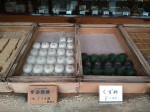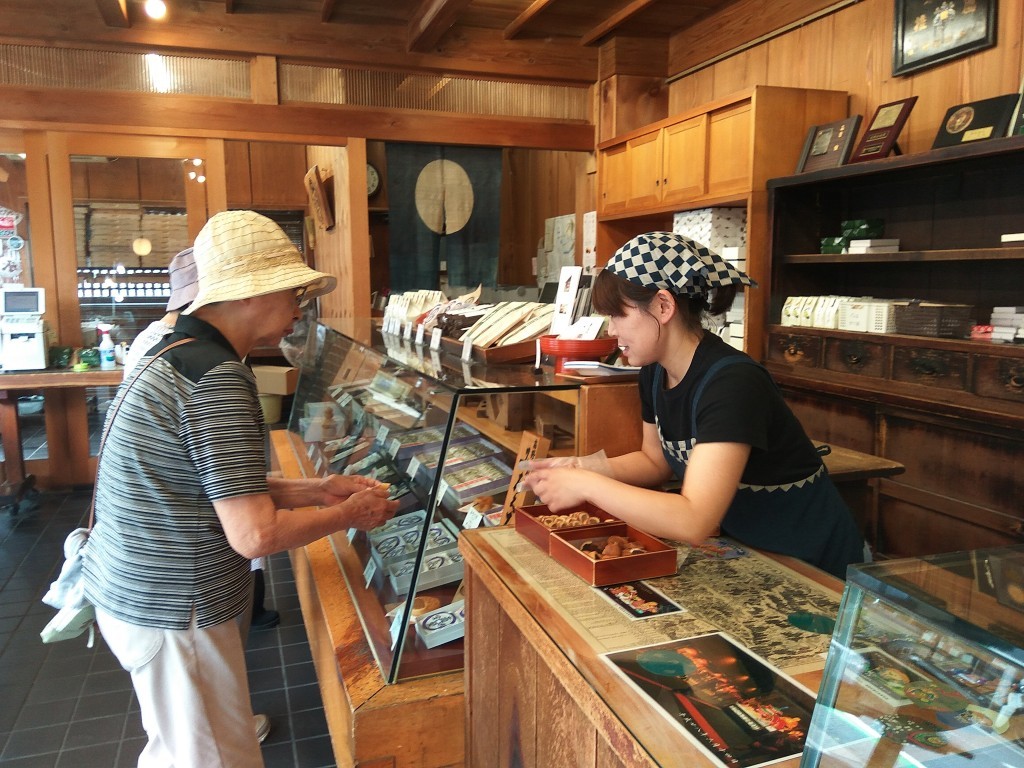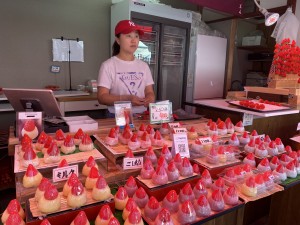








Koyasan is famous not only for monasteries but also for sweets. And that was also the place where we had enough time to visit local shops with sweets. We saw and knew that Japanese sweets are sophisticated in the design and are beautiful, but didn’t have enough time to admire them or to try. The main difference between Japanese and western sweets, is their sweetness – they are much less sweet and they are sweet in a different way. Another thing is, that very often they use red beans for the filling, jelly or for making the whole cake. That’s something unusual for western countries.

Dora Cake (Dorayaki) is a good example of red beans paste filling. Dorayaki are traditional Japanese sweets and consist of three layers. The upper and the lower one is made from a dough resembling little pancakes, and the middle one is a sweet Azuki red bean paste. The name is said to origin from the Japanese word ‘dora’, what means a ‘gong’, that is similar in the shape.

Manju is another traditional Japanese sweet that’s filled with ‘anko’. Anko is a red bean paste made from boiled and kneaded Adzuki red beans with sugar. The surrounding dough - a steamed one, is made from rice powder, buckwheat and flour. They can have different shapes and forms and different varieties of the filling.

The next one is Daifukumochi (Daifuku) that is also usually filled with anko, either sweet or salty. Daifuku is a small glutinous rice cake known in Japan as ‘mochi’ that comes in different colors. Most commonly you can find white, green and pink daifuku. As the mochi dough is sticky, daifukumochi is in 99% covered by some kind of a starch (usually potato or corn). Apart from the traditional anko filling, in daifuku you can find ume (Japanese apricot), strawberries, chestnuts blended with sugar, melon paste and also combinations of different fruits with the Azuki red bean paste.

A jelly dessert made from a red Azuki or white kidney bean paste mixed with agar and sugar is called Yokan. Yokan is formed in blocks and then cut into pieces or slices. White bean yokan is very often colored and flavored (for example with a powdered green tea). Some varieties of yokan contain cut fruits, nuts and vegetables as sweet potatoes or whole Azuki beans.

Of course, not all Japanese wagashi base on an ‘anko’ filling or generally on Azuki beans. There is plenty of them, that can be both crunchy and chewy, jelly-like, glutinous or sticky.
If you want to know more about it, read the post - Japanese sweets - how are they?
Date: 2018-08-20
Author: Beti – A passionate traveler and lover of Asian cuisine, especially Thai and Japanese dishes, Bernadeta brings her culinary and cultural experiences to life in her writing. Beyond her travels, she’s an avid technology enthusiast with a deep interest in data processing, merging her love for exploration with analytical insights.
Photographer: Adalbert – An aficionado of computers and photography, Adalbert captures the essence of diverse cuisines with a discerning eye. A connoisseur of rich flavors and particularly fond of meat-based dishes, he combines his technical skills with his passion for the culinary arts in every shot.









